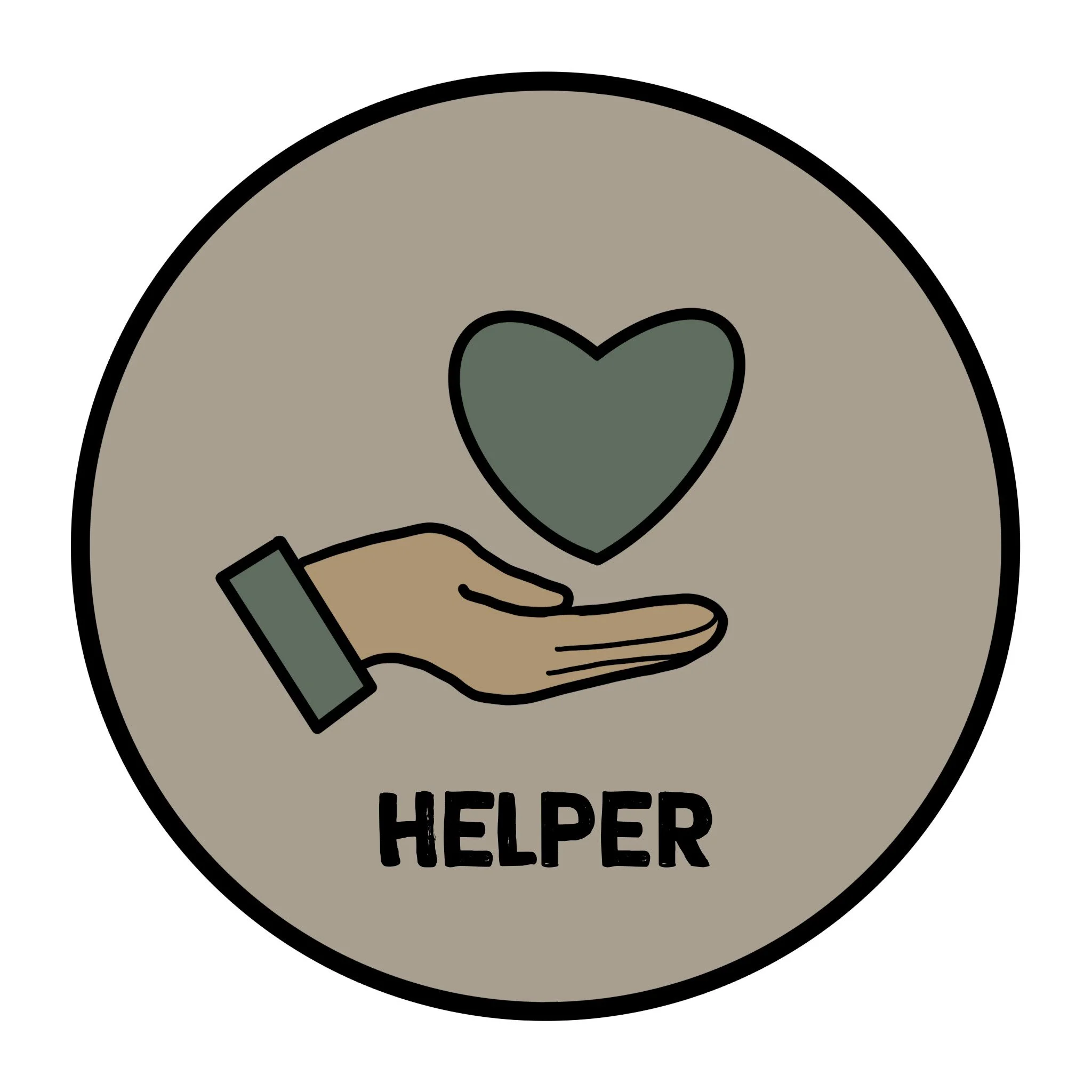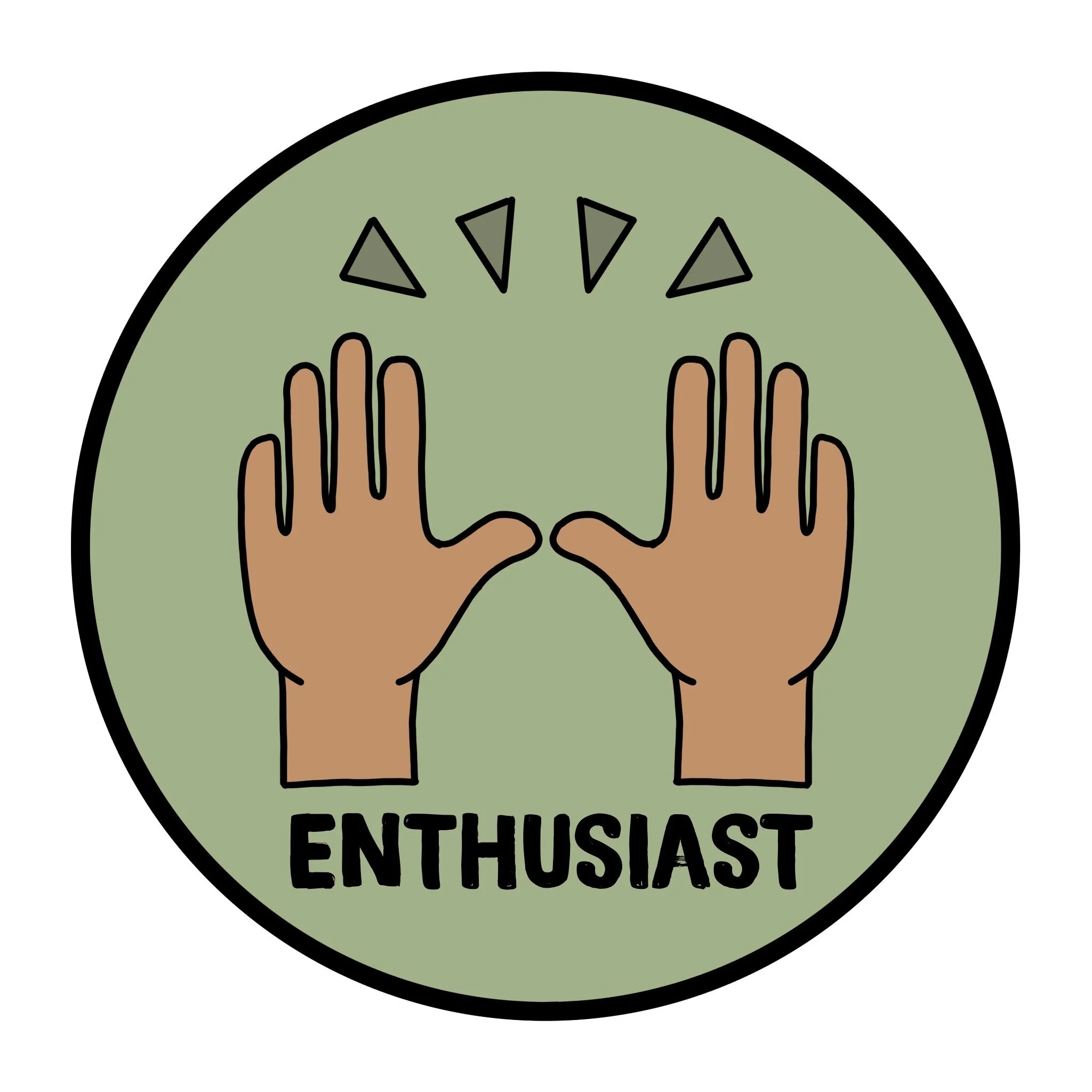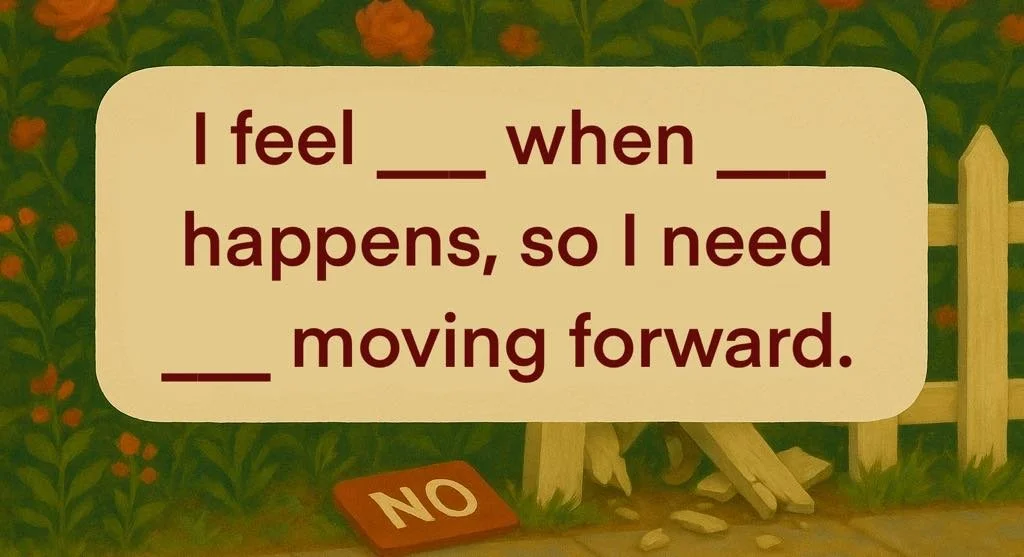I Love You, and the Answer is Still No: A Practical Guide to Boundaries That Actually Work
⚠️ Need a heads-up? This post takes about 6 minutes to read silently (or 12 aloud).
Let’s Talk Boundaries…
Listen, I know, setting boundaries can feel a little... icky, uncomfy, unpleasant. You might worry that you’re being mean, pushy, too much, or even selfish. Maybe you’ve tried to set one before, only to cave five minutes later and end up more resentful than when you started. If any of that sounds familiar, you’re not alone, and you’re not a bad person for struggling with this.
Boundaries are hard, but they’re also necessary. Not just for protecting yourself, but for building real, honest, mutual relationships. So let’s talk about what boundaries really are, how to set them, and why they’re actually one of the kindest things you can do for yourself... and the people around you.
What Boundaries Are (and What They’re Not)
Here’s the deal—boundaries are not about controlling other people. They’re not threats, ultimatums, or power plays. They’re about you, and what you’re willing to allow or not allow in your space, energy, and life.
A real boundary sounds like this:
“I don’t feel safe when yelling happens in conversations. If that continues, I’ll need to step away until things calm down.”
Or:
“I don’t take texts from clients after 7 PM. If you message me then, I’ll respond during business hours.”
Notice what both of those have in common? They’re actually about your behavior, not theirs. You’re not saying “you can’t do this,” you’re saying “if this happens, here’s what I will do.”
If you're feeling guilt about a boundary you want to set, ask yourself:
Am I taking on their feelings about my decision?
Does this boundary align with my values?
Is this a reaction, or a clear choice?
And most importantly... what have I unintentionally taught this person was acceptable by not setting a boundary before now?
(This is not about shame or blame—this is about reclaiming your voice and making a new choice.)
When You Don’t Stick to the Boundary
Now, for the elephant in the room: it’s not just setting the boundary that’s hard, it’s holding it.
When you set a boundary and then backtrack (especially if it’s something you’ve been inconsistent about before), it sends mixed messages. People may not take you seriously the next time. Think of it like building a fence... and then pulling the boards off and installing another gate whenever someone pushes against it. Eventually, they’ll stop believing the fence means anything. If the whole thing is just gate after gate, then what’s the point?
Relenting too soon teaches people to keep testing your limits or wait you out. And let’s be honest, it teaches you not to trust your own word, too.
The Different Types of Boundaries
Let’s break this down. Not all boundaries are about space or time—sometimes, they’re about energy, emotion, or even your own thoughts. Here are a few types to consider:
1. Physical boundaries:
Your body, your space. This might be things like not wanting to hug people, needing time alone, not letting your in-laws just drop in unannounced, or saying no to being touched.
2. Emotional boundaries:
These are about your feelings, opinions, and inner world. It’s okay not to want to be someone’s dumping ground. It’s okay to say, “I can’t hold this for you right now.”
3. Time and energetic boundaries:
Your time is your battery. Saying no to back-to-back events, blocking off rest days, turning your phone off at night... all of these are valid boundaries.
*A common struggle? Setting emotional boundaries with family. I hear this one a lot: “But she’s my mom...” And listen, I get it. But, if you're both adults, your relationship should be based on mutual respect, not a power imbalance rooted in guilt, obligation, or outdated, unspoken rules from your childhood.
Boundaries You Set With Yourself
Sometimes, boundaries aren't about keeping others out. They’re about keeping yourself in check.
Have you ever stayed up scrolling TikTok until 3 AM knowing full well you’ll be wrecked tomorrow? Or said yes to something even though every cell in your body was screaming “please don’t” or “oh shit, I’m gonna regret this”?
Self-boundaries are the promises you make to yourself about how you want to live, how you want to feel, and what kind of patterns you no longer want to participate in. They help you course-correct. They remind you of who you are and what you value. And when you can hold a boundary with yourself, you get better at holding them with others, too.
How Each Enneagram Type Might Struggle With Boundaries
Boundary-setting doesn’t happen in a vacuum. The way we show up in relationships, how we handle conflict, what we fear, and what motivates us... all of that plays into how (or if) we set boundaries. The Enneagram gives us a lens to understand these patterns. Some types overgive, some shut down, some avoid, and some bulldoze, but all of it makes sense when you understand the “why” underneath. And this is some wisdom that can shed light on those patterns and help you understand yourself better, rectifying your past misgivings about boundary setting. So, if you’ve ever wondered why holding a boundary feels so hard for you, the answer might be in your type. (Because, of course, I’m bringing the Enneagram into this... You knew that was coming.) Feel free to click through any of the badges for each type to learn more, or scoot over to my Enneagram Greenhouse for all of my Enneagram content.
Type 1: The Reformer
Struggles with boundaries that feel “selfish” or “unjust.”
May suppress their needs if they perceive others' needs as morally more important.
Can fall into over-functioning out of a sense of duty.
Boundary Work:
Learning that protecting your time and peace isn’t immoral—it’s responsible. Boundaries help you show up as your best self.
Type 2: The Helper
Classic over-giver. Boundaries feel like rejection.
Fear that saying no = losing love, affection, and peace in relationships.
Struggles to differentiate care from codependence.
Boundary Work:
Saying no doesn't make you unlovable. It makes your yes more meaningful. It also communicates that you are not a doormat, and see yourself as valuable too.
Type 3: The Achiever
May ignore emotional or physical limits to maintain performance or image.
Can burn out by saying yes to everything that offers status or validation.
Struggles with emotional boundaries, especially around vulnerability.
Boundary Work:
You don’t have to earn your worth with output. Your emotional well-being deserves space too.
Type 4: The Individualist
May struggle with boundaries around emotional expression—can either overshare or wall off.
Vulnerability is key to connection, but they may resist structure.
Sometimes lets mood dictate boundaries inconsistently.
Boundary Work:
Boundaries don’t limit your authenticity—they give it a safe place to be seen.
Type 5: The Investigator
Naturally inclined toward boundaries—maybe too much.
Withholds energy, time, and emotional access to stay in control.
Can disappear emotionally or physically if overwhelmed.
Boundary Work:
It's okay to let people in gradually. Healthy boundaries don’t require isolation.
Type 6: The Loyalist
Boundaries can feel like betrayal, especially in close relationships.
Struggles with “what ifs” (What if they leave? What if I’m wrong?).
Often defaults to loyalty over self-protection.
Boundary Work:
Real loyalty includes being loyal to yourself. Boundaries can actually strengthen trust, in yourself as well as others. You can draw boundaries with people and still be loyal to them.
Type 7: The Enthusiast
Avoids discomfort, so might skip conflict altogether by avoiding boundaries.
Says yes too often to avoid missing out.
May distract from their own needs by overcommitting or reframing too quickly.
Boundary Work:
Boundaries are not buzzkills. They help you stay grounded so joy isn’t fleeting.
Type 8: The Challenger
Often sets reactive or aggressive boundaries (“You crossed me. Gone.”).
Prefers cutting people off to having vulnerable conversations.
Hates feeling controlled, so may avoid even setting boundaries that imply weakness.
Boundary Work:
Boundaries don’t have to be battles. Real strength includes softness—and leaving space for repair.
Type 9: The Peacemaker
Struggles to identify their own needs, so boundaries often go unspoken.
Avoids conflict so thoroughly that they let resentment build quietly.
“Go along to get along” until they implode or withdraw completely.
Boundary Work:
Your needs matter. Setting a boundary isn’t disruptive—it’s how peace is maintained.
Need Help Explaining Your Boundaries? Try These Metaphors
Not everyone relates to the “fence” analogy (even though it’s a classic). So here are a few other ways to visualize what boundaries can look and feel like. Pick the one that clicks for you, or use them to help someone else understand where you’re coming from:
🧭 The GPS Metaphor
Boundaries are like your internal GPS—you’re not angry at the old road, you’re just choosing a different direction that better fits your needs. It’s not about punishing someone for taking a wrong turn, it’s about rerouting yourself toward peace and alignment.
Best for: Navigating relationship shifts where you’re no longer available in the same way (like pulling back from a friendship that became one-sided or draining).
🛋 The Guest House Metaphor
Your time, energy, and emotions are like a guest house—you decide who comes in, how long they stay, and what the house rules are. If a guest keeps leaving the bathroom a mess or disrespecting the quiet hours, it’s your right to change the invite list.
Best for: Situations where people have been consistently disrespecting your emotional or physical space (like a family member who unloads heavy stuff without consent or a coworker who treats you like their personal therapist).
🧳 The Carry-On Luggage Metaphor
You only get so much space in your emotional carry-on. If you keep trying to cram in everyone else’s needs, problems, and feelings, the zipper breaks—and you end up in meltdown mode at the gate. Boundaries are how you decide what actually fits.
Best for: Emotional overextension, especially for people who take on too much (like caregivers, helpers, or those who struggle with guilt when saying no).
🛠 The Tool Shed Metaphor
Your support, time, and talents are tools—not freebies. You don’t have to hand them out to anyone who asks, especially if they’ve borrowed and broken them before. You get to decide who has access and under what conditions.
Best for: People who constantly ask for your help or energy without respecting your limits (like friends who only come around when they need something or clients who don’t respect your office hours).
🎨 The Art Studio Metaphor
Your internal world—your emotions, thoughts, and creative energy—is like an art studio. You need calm, clarity, and space to do your best work. If someone barges in uninvited, critiques everything, or brings chaos, it disrupts your process.
Best for: Neurodivergent folks, creatives, and anyone who needs solitude or emotional stability to function well (like protecting your downtime or creating quiet time in a busy household).
How to Actually Set the Boundary
Here’s a simple formula that works in almost every situation:
Don’t over-explain. Don’t apologize. Just be clear. If someone pushes back, remember—those who struggle with boundaries usually benefit from you not having them. Their discomfort doesn’t mean your boundary is wrong.
You don’t have to yell. You don’t have to be harsh. You can love someone... and still say no.
Final Thoughts: Boundaries Are Kind, Not Cruel
Here’s your permission slip: You’re allowed to take up space. You’re allowed to say no. You’re allowed to need rest, quiet, alone time, clarity, or distance.
Boundaries are not walls, they’re bridges to healthier connection. They give people the map to love you better. They help you love yourself better.
And if all of this feels too hard to navigate alone, therapy can help. That’s what we’re here for!
As someone who struggled with setting boundaries in the past, I can fully understand the stress and the nuance, and I would love to help you navigate through this. It’s scary at first, I know, but MAN is it worth it, and MAN are YOU and your peace worth the effort! Boundaries genuinely make your life better, it’s just the beginning that is the toughest, and I’m here for that!












